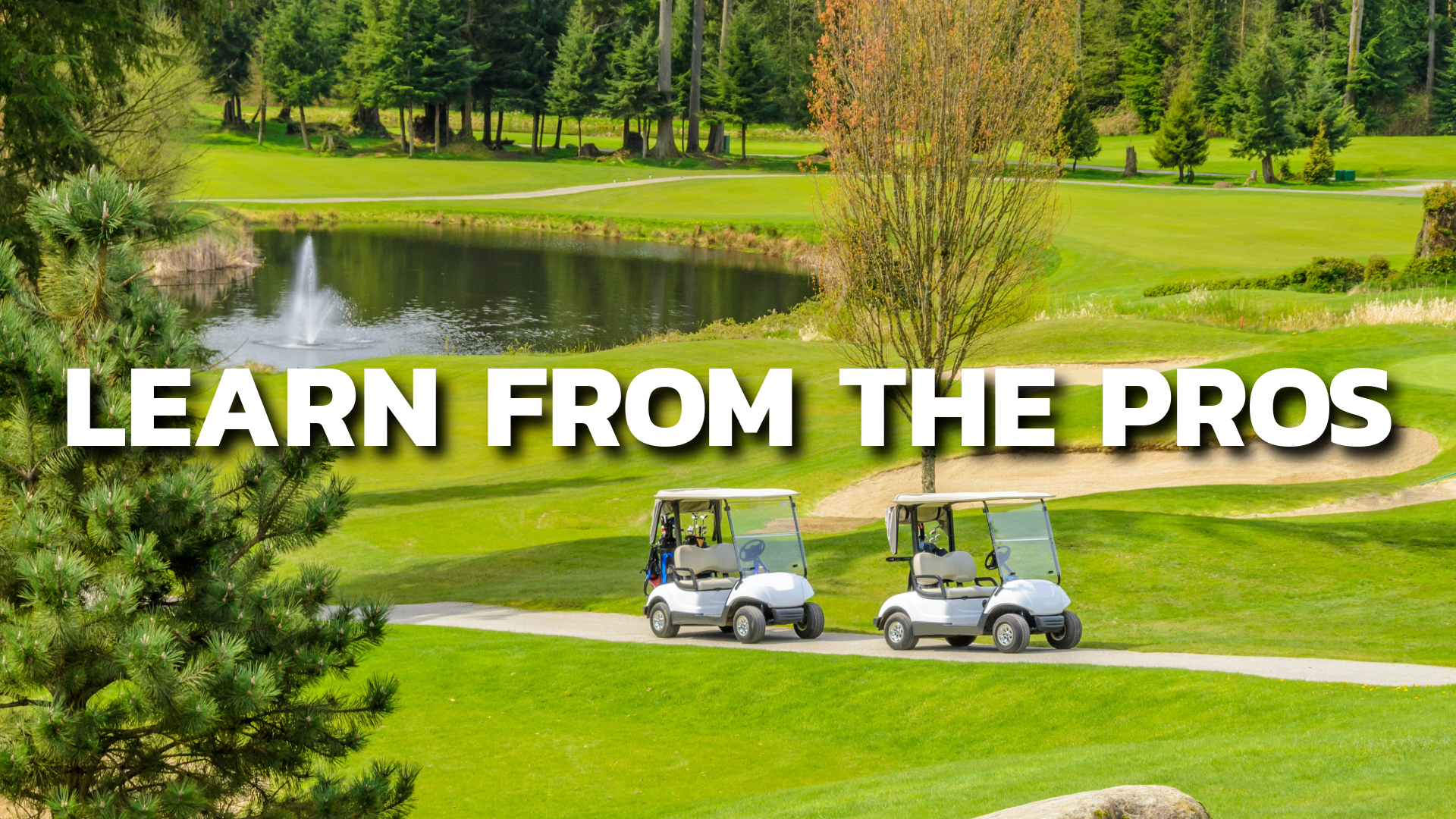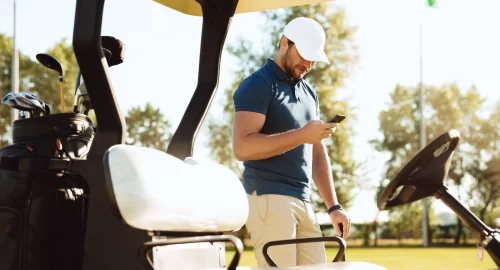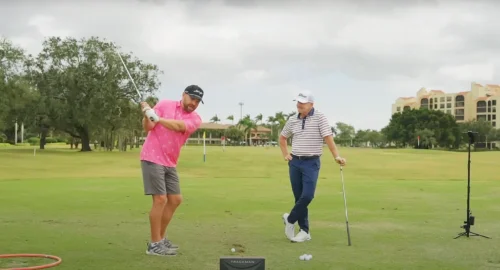
When you think of high pressure scenarios in golf, a playoff tournament may be the first thing to come to mind. Whether it’s something like the Open Championship, the Tour Championship or even just a weekly event—a playoff increases the stakes and puts on the pressure.
Everything compresses. One shot can define everything, and mistakes aren’t just costly; golfers run out of time and lose the tournament in the worst possible way. The playoff mindset starts before the actual playoff, and the best players are already prepared for it.
We’ve broken down some key lessons featuring coaches and performance experts, so you can apply them to your golf game.
These insights explain how elite players train for high-pressure situations and, more importantly, how you can use the same tools to manage pressure in your weekend rounds. Whether you’re playing a club championship or a $5 Nassau, this is how you can learn to handle even the most high-pressure playoffs.
A Pre-Shot Routine Is Your Anchor in Chaos
When the pressure spikes, your brain seeks something familiar. Tour players leave heavily on pre-shot routines during their rounds, but you’ll notice that this becomes even more important during playoff situations.
While some routines may look quirky (Keegan Bradley, Sergio Garcia), they are done to give the body and the brain something to trust when everything else is out of their control. The routine can be looked at as your anchor.
It will help you narrow focus, lower your heart rate, and give your brain permission to perform.
Try these tips to build your own pre-shot routine:
- Choose 3-4 consistent actions (e.g., deep breath, two waggles, one final look).
- Say a cue phrase to yourself like “commit and go” or “you got this”.
- Practice it under pressure.
- Hit 5 balls, counting only if you complete your full routine.
Don’t wait until a playoff moment to build this. Use it in your regular rounds on both good and bad shots, so it’ll be as natural as breathing when you tee up.
Pressure Doesn’t Start in the Playoff, It Builds Before It
Pressure is something that starts well before the playoff situation arrives. As explained in Martin Chuck’s video, pressure is cumulative. You don’t suddenly feel the nerves; you feel it because this is all new, and you are reaching something that you may not have gotten to in the past.
New experiences can add pressure to the brain. So, professionals work on training themselves to handle this pressure before they encounter it on the course. They put pressure on themselves in practice and away from tournament situations to help better prepare.
The brain can then relate to those practice sessions and pull some confidence and calm from that.
If you want to add some pressure to your practice, try this:
- Play a short game drill where you have to get 5 out of 5 up and downs, miss one, and you start over.
- Putt with consequences. Make 10 in a row from 4 feet, or you redo them all.
- Keep a scorecard on the range, track fairways, greens, and up-and-downs. Treat each ball like it counts.
It Seems Simple, but Breathing Is Fundamental
Scottie Scheffler has discussed how he recognizes times on the course when he needs to slow down his breathing. People talk about breathing in terms of relaxation, but there is more to breathing than just inhales and exhales.
Breathing directly changes your physiology. When your heart rate spikes and your hands feel shaky, controlled breathing brings your nervous system back to center. This is especially important when you’re trying to keep a repeatable, hands-free swing for the best contact and accuracy possible.
Breathing techniques should be practiced off the range and then in casual rounds, so that when the pressure of a playoff is on, the breathing is not something you are trying to learn. Great athletes (golf and other sports) work on their breathing techniques.
Try “Box Breathing” on the Course
- Inhale for 4 seconds
- Hold for 4 seconds
- Exhale for 4 seconds
- Hold empty for 4 seconds
This cycle takes about 16 seconds. That’s enough time to bring calm back to your body, especially before a tee shot or pressure putt. Do this as part of your pre-shot routine, and it can become a built-in “reset.”
Trust in the Golf Fundamentals
When the pressure peaks, whether it be a playoff hole, the last tee shot, or a final putt, many amateurs try to play the hero, and try something new and exciting.
The reality is, it’s important to simply do what you normally do, and rely on the fundamentals that you’ve trained for. That includes your most trusted shot shape, go-to tempo, and setup routine.
This is yet one more reason why golf professionals will tell you how important it is to dial in your fundamentals and know when they’re a solid, reliable system. When the pressure is on, you’ll need them.
Here are some tips to learn to trust your fundamentals:
- Identify your most reliable tee shot.
- Practice it in pressure drills so it becomes automatic.
- In big moments, trust it. Don’t try to force something that worked once on the range.
- When the pressure’s on, let your fundamentals carry you
- Don’t ignore the importance of practicing fundamentals like setup, grip, alignment, and stance when you’re training.
You Can Train Like This, in Real Life
These pressure techniques aren’t just theoretical. If you plan to play golf at a higher level or simply want to know how to perform under pressure, you can learn, practice, and refine your skills. A great way to do it is with the Performance Golf’s VIP Golf Schools. If you’re serious about improving your ability to handle high-pressure shots, this is the environment to do it.
If you want to know how to pull off short game shots in a high-stakes tournament, or build a routine that holds up under stress, or how to practice with pressure, the real-time coaching from elite instructors will help you get it done.
There’s a big myth in the game of golf. Many people believe that some golfers just handle pressure better than others. The truth is, all elite players prepare for pressure. They train their minds and bodies, and they practice techniques that can improve their performance as players.
If they can do it, nothing is stopping amateur players from doing it. Spend time working on both your physical and mental game so you can reach all of your goals on the course.

